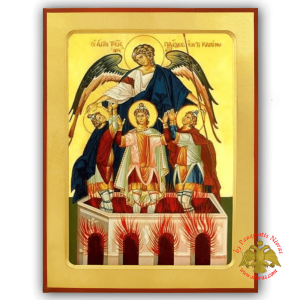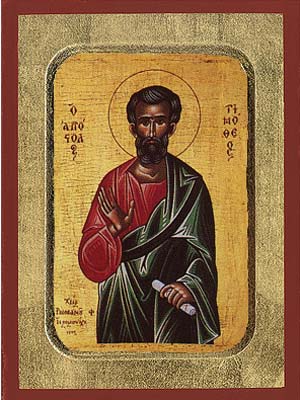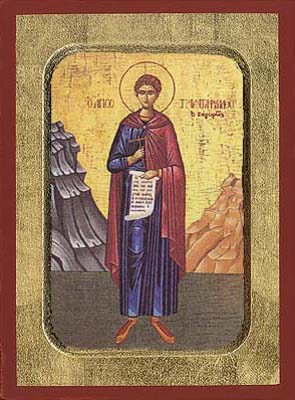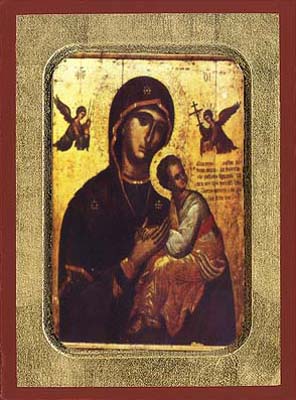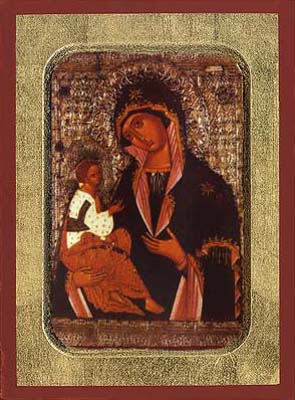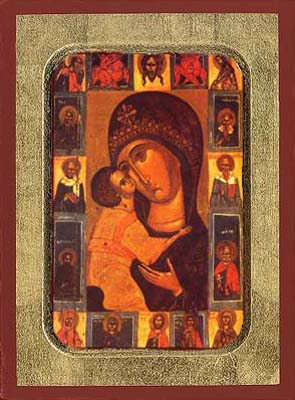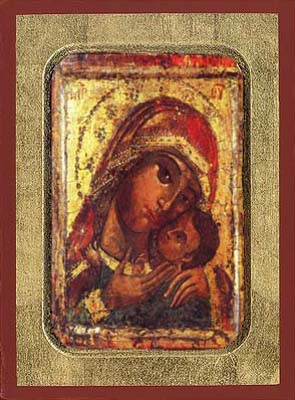
Сall us today
+30.2103230345
My account
Login
Register
- Byzantine Icons
- BeesWax and Incense Icons
- Byzantine Aluminium Icons
- Byzantine Silver Plated Icons
- Framed Glass Holy Icons
- Hand Carved Icons
- Hand Made Enamel Icons
- Hand Made Icons of Christ
- Hand Made Icons of Holy Virgin Mary
- Hand Made Icons of Saints
- Hand Painted Byzantine Icons
- Hand Painted Icons Special Orders
- Icon Display Stands
- Iconostasis with Electric Lamp
- Laminated Holy Icons
- Orthodox Annual Agiologion
- Orthodox Crystal & Glass Icons
- Orthodox Pin Button Icons
- Silver Byzantine Icons
- No.1055
- No.1057 Size: 34.5 x 42cm
- No.1058 Size:31x35cm
- No.1060 Size: 26.5cm x 33cm
- No.1062 Size: 24cm x 28cm
- No.1064 Size: 21 x 26cm
- No.1065 Size: 25cm x 31cm
- No.1068 Size:22x27cm
- No.1073 Size: 23cm x 27cm
- No.1075 Size : 19cm x 24cm
- No.1078 Size: 16cm x 22cm
- No.1082 Size: 14cm x 18cm
- No.1083 Size: 13cm x 16cm
- No.M1183 Size: 14.5 x 11.5cm
- Silver Classical Collection Icons
- Wedding Crowns & Cases
- Wooden Antique Style Icons
- Wooden Byzantine Icons
- Wooden Diptychs & Triptychs
- Wooden Iconostasis
- Wooden Icons with Glass Oil Cup
- Wooden NeoClassical Icons
- Wooden Russian Style Icons
- Candle Stands
- Cemetery Funeral Products
- Church Supplies
- Andidoron Bowls
- Anointing Oil Bottles
- Baptismal Fonts
- Candelabra Ventilated
- Candle Cases & Coin Boxes
- Cement ReadyMade Church
- Chains and Gift Boxes for Englolpion Sets
- Chanter Psalter Stands
- Cherubims Exapterigo
- Church Candle Recycle Box
- Church Chairs & Throns
- Church Corridor Columns
- Church Orthodox Bells
- Church Supplies upon Request
- Crosiers – Bishop Stuff
- Ecclesiastical Alouminium Chandelier
- Ecclesiastical Candelabrum
- Ecclesiastical Censers
- Ecclesiastical Icon Stands
- Ecclesiastical Latterns and Lamps
- Ecclesiastical Special Cases
- Ecclesiastical Vase
- Ecclesiastical Vigil Oil Candles
- Ecclesiastical Zeon & Sprinkler
- Engolpion Panagia Sets
- Epitaph Kouvouklion
- Holy Apostle Cover
- Holy Communion Chalice Set
- Holy Communion Wine
- Holy Gospel Book Covers
- Holy Oil Bowls
- Holy Table Oil Candles
- Holy Table Tabernacle
- Lances – Spears for Holy Communion
- Monastic Talanton
- Orthodox Church Sconces
- Orthodox Gospel Metal Stands
- Ostrich Orthodox Decorated Egg
- Pectoral Crosses
- Reliquaries Boxes
- Tables for Church
- WoodCarved Candelabrum
- WoodCarved Chairs – Stalls
- Ex-Voto Tamata Milagros
- Incense Burners & Orthodox Incense
- Alouminium Incense Burners
- Ceramic Incense Burners
- Holy Oil Frangrance
- Home Brass Incense Burners
- Incense Athonite
- Incense Coal
- Incense Incesco Catholic
- Incense Metal Boxes
- Incense Natural & Resins
- Incense Orthodox
- Incense Premium Athonite
- Incense Wooden boxes
- Metal Tongs for Incense
- Porcelain Incense Burners
- Orthodox CD & Book Library
- Orthodox Crosses
- Orthodox Gifts
- 2024 Lucky Charms
- 2024 Paschal & Church Candles
- 2025 Orthodox Calendars
- Aladdin Lamps
- Bookmarks
- Ceramic & Crystal Gifts
- Easter Coloring Dye for Eggs
- Ecclesiastical Colognes
- Gold Eye Pentants
- Holy Water Bottles
- Key Rings
- Lanterns
- Martirika
- Orthodox Car & Gifts Pendants
- Orthodox Cross Gold K14
- Orthodox Filakto
- Orthodox Icons Magnets
- Orthodox Neckwear Crosses & Icons
- Praying Ropes
- Praying Rozaries
- Prosphora Seals
- Silver 925 Car Amulets
- Silver 925 Chains
- Silver 925 Orthodox Crosses
- Silver 925 Orthodox Pendants
- Silver 925 Rings
- Silver 925 Russian Crosses
- Small Gospel Pendants
- Traditional Blue Eyes
- Various Small Icons
- Wax Healing Creams
- Wooden NeckWear Crosses
- Vestments, Traditional Costumes & Church Linens
- Baptism Clothing
- Clerics Hats
- Covers Of The Holy Grail
- Ecclesiastical Ribbons
- Epitaph Cover Koimesis
- Epitaph Covers Mourners
- Holy Communion Cup Covers
- Holy Communion Purificators & Accessories
- Iconostasis Orthodox Cover
- Orthodox Antimension
- Orthodox Belts
- Orthodox Cotton Cases and More
- Orthodox Cufflinks
- Orthodox Flags & Banners
- Orthodox Greek Flag With Holy Icons
- Rassa – Anteri
- Shroud
- Velvet Orthodox Garment & Prayers
- Vestment Embroidery Derocations
- Vestment Fabrics
- Vestments for Altar Boy
- Vigil Oil Candles
- Show more
Menu
Categories
- Cemetery Funeral Products
- Church Supplies
- Holy Apostle Cover
- Ostrich Orthodox Decorated Egg
- Engolpion Panagia Sets
- Chanter Psalter Stands
- Ecclesiastical Zeon & Sprinkler
- Church Candle Recycle Box
- Pectoral Crosses
- Church Corridor Columns
- Ecclesiastical Candelabrum
- Holy Oil Bowls
- Church Supplies upon Request
- Ecclesiastical Alouminium Chandelier
- Candle Cases & Coin Boxes
- Candelabra Ventilated
- Ecclesiastical Special Cases
- Ecclesiastical Latterns and Lamps
- Holy Communion Wine
- WoodCarved Chairs - Stalls
- Cherubims Exapterigo
- Ecclesiastical Icon Stands
- Church Orthodox Bells
- Cement ReadyMade Church
- Baptismal Fonts
- Epitaph Kouvouklion
- Reliquaries Boxes
- Church Chairs & Throns
- Holy Table Oil Candles
- WoodCarved Candelabrum
- Andidoron Bowls
- Tables for Church
- Ecclesiastical Vigil Oil Candles
- Ecclesiastical Censers
- Crosiers - Bishop Stuff
- Lances - Spears for Holy Communion
- Ecclesiastical Vase
- Holy Communion Chalice Set
- Orthodox Gospel Metal Stands
- Anointing Oil Bottles
- Holy Table Tabernacle
- Holy Gospel Book Covers
- Orthodox Church Sconces
- Chains and Gift Boxes for Englolpion Sets
- Monastic Talanton
- 2025 Collection Paschal & Church Candles
- Ex-Voto Tamata Milagros
- Incense Burners & Orthodox Incense
- Incense Premium Athonite
- Incense Natural & Resins
- Incense Incesco Catholic
- Incense Athonite
- Home Brass Incense Burners
- Porcelain Incense Burners
- Incense Metal Boxes
- Metal Tongs for Incense
- Incense Orthodox
- Incense Wooden boxes
- Incense Coal
- Ceramic Incense Burners
- Alouminium Incense Burners
- Holy Oil Frangrance
- Orthodox CD & Book Library
- Orthodox Crosses
- Orthodox Gifts
- Small Gospel Pendants
- Orthodox Car & Gifts Pendants
- Traditional Blue Eyes
- Silver 925 Rings
- Orthodox Filakto
- Orthodox Icons Magnets
- Praying Ropes
- Silver 925 Chains
- Bookmarks
- 2025 Orthodox Calendars
- Silver 925 Orthodox Crosses
- Silver 925 Orthodox Pendants
- Lanterns
- Martirika
- Wax Healing Creams
- Aladdin Lamps
- Praying Rozaries
- 2024 Lucky Charms
- Prosphora Seals
- Ceramic & Crystal Gifts
- Silver 925 Russian Crosses
- Various Small Icons
- Silver 925 Car Amulets
- Gold Eye Pentants
- Key Rings
- Holy Water Bottles
- Orthodox Cross Gold K14
- Wooden NeckWear Crosses
- Easter Coloring Dye for Eggs
- Ecclesiastical Colognes
- Orthodox Neckwear Crosses & Icons
- Vestments, Traditional Costumes & Church Linens
- Rassa - Anteri
- Orthodox Cotton Cases and More
- Vestment Fabrics
- Shroud
- Clerics Hats
- Ecclesiastical Ribbons
- Orthodox Flags & Banners
- Orthodox Belts
- Velvet Orthodox Garment & Prayers
- Vestment Embroidery Derocations
- Covers Of The Holy Grail
- Iconostasis Orthodox Cover
- Vestments for Altar Boy
- Epitaph Cover Koimesis
- Holy Communion Purificators & Accessories
- Holy Communion Cup Covers
- Orthodox Antimension
- Baptism Clothing
- Epitaph Covers Mourners
- Orthodox Greek Flag With Holy Icons
- Orthodox Cufflinks
- Vigil Oil Candles
- Byzantine Icons
- Wooden Iconostasis
- Hand Painted Byzantine Icons
- Wooden NeoClassical Icons
- Iconostasis with Electric Lamp
- Orthodox Pin Button Icons
- Silver Byzantine Icons
- No.1062 Size: 24cm x 28cm
- No.1078 Size: 16cm x 22cm
- No.1058 Size:31x35cm
- No.1057 Size: 34.5 x 42cm
- No.1083 Size: 13cm x 16cm
- No.1064 Size: 21 x 26cm
- No.1073 Size: 23cm x 27cm
- No.M1183 Size: 14.5 x 11.5cm
- No.1060 Size: 26.5cm x 33cm
- No.1068 Size:22x27cm
- No.1065 Size: 25cm x 31cm
- No.1082 Size: 14cm x 18cm
- No.1055
- No.1075 Size : 19cm x 24cm
- Orthodox Crystal & Glass Icons
- Framed Glass Holy Icons
- Hand Made Icons of Christ
- Icon Display Stands
- Orthodox Annual Agiologion
- Hand Made Icons of Saints
- Wooden Icons with Glass Oil Cup
- Hand Made Icons of Holy Virgin Mary
- Silver Classical Collection Icons
- Byzantine Silver Plated Icons
- Byzantine Aluminium Icons
- Wooden Antique Style Icons
- Hand Made Enamel Icons
- Wedding Crowns & Cases
- Wooden Russian Style Icons
- Wooden Diptychs & Triptychs
- BeesWax and Incense Icons
- Hand Painted Icons Special Orders
- Hand Carved Icons
- Laminated Holy Icons
- Wooden Byzantine Icons
- Candle Stands
Wishlist
0
Cart
0
0
Cart
0
No products in the cart.
Return To Shop
Shopping cart (0)
Subtotal: $0.00
Free shipping over 49$
Theotokos Sweet Kissing, of the Akathist (Laudation of Theotokos) – Neoclassical Wooden Icon
SKU: th-n20053 $6.27 – $54.89Three Charities, Saints Faith, Hope and Love – Neoclassical Wooden Holy Icon
SKU: v-cl26190 $6.27 – $54.89Three Hierarchs Byzantine Wooden Icon
SKU: st-2342 $6.27 – $284.22
Iconographer: Father MichaelCommemorates on: January 30The common feast of these three teachers was instituted a little before the year 1100, during the reign of the Emperor Alexis I Comnenus, because of a dispute and strife that arose among the notable and virtuous men of that time. Some of them preferred Basil, while others preferred Gregory, and yet others preferred John Chrysostom, quarrelling among themselves over which of the three was the greatest. Furthermore, each party, in order to distinguish itself from the others, assumed the name of its preferred Saint; hence, they called themselves Basilians, Gregorians, or Joannites. Desiring to
Timothy the Apostle
SKU: st167-2501 $6.27 – $284.22
Iconographer: Romanos FatherCommemorates on: January 22
The Apostle Timothy, who was from Lystra of Lycaonia, was born of a Greek (that is, pagan) father and a Jewish mother; his mothers name was Eunice, and his grandmothers name was Lois (II Tim. 1:5). He became the disciple of the Apostle Paul when the latter first preached there, and he followed him during the whole period of the Apostles preaching. Afterwards, he was consecrated by him as first Bishop of the Church in Ephesus. Under the supervision of John the Evangelist, who governed all the churches in Asia, he completed his life
Virgin Amolintos
SKU: Amolintos $7.30 – $41.42
Unique Museum Copy of Virgin Amolintos.This icon shows the saddest countenance of the Virgin among all the other icongraphic types. Christ turns his head towards the left and sees the angel who is holding the Cross while the other angel is holding the symbols of Passion. The icon is painted in egg tempera on wood and the two prototypes are to be found in Fiesole of Florence and Saint Alphonso of Rome.
Virgin Belozersk
SKU: Belozersk $7.30 – $31.73
Unique Museum Copy of Virgin Belozersk.A Russian icon of the 13th century. It follows the iconographic type of the Virgin of Mercy (Eleoussa) which is characterized by the melancholic and serious countenance of Virgin who envisages the impending tragedy. She holds tenderly the child Jesus who is embracing her. The intense colouring of the halos, the vestment and the margin provide with a festive exaltation. Angels and Saints appear in circles around the Virgin The painting is in egg tempera on wood.
Virgin Grebenskaya
SKU: Grebenskaya $7.30 – $31.73
Unique Museum Copy of Virgin Grebenskaya.A Russian icon of the 15th century and of Russian School. The portrayed Virgin belongs to the iconographic type of the àƒÆ’Â’¢àƒ’¢â€Å¡Â’¬àƒ…â€Å“HodegetriaàƒÆ’Â’¢àƒ’¢â€Å¡Â’¬àƒâ€šÂ’ holding Christ in her right arm. The theme symbolizes the Virgin of Victory and Glory.
Painted in egg tempera on wood, the icon found in the Museum of Saint Sergious at Zagorsk in the USSR.
Virgin of Don
SKU: Don $7.30 – $31.73
Unique Museun Copy of Virgin of Don.A Russian 14th century icon. It belongs to the iconographic type of the Virgin of Mercy ( Eleoussa ) characterized by the melancholic and serious countenance of the Virgin. She holds tenderly the child Jesus who is embracing her. The painting is in egg tempera on wood and is found in the Tretiakov Gallery in Moscow.
Virgin of Igor
SKU: Igor $7.30 – $31.73
Unique Museum copy of Virgin of Igor.A Russian icon of the 15th century. It follows the iconographic type of the Virgin of Mercy (Eleoussa) which is characterized by the melancholic and serious countenance of Virgin who envisages the impending tragedy. She holds tenderly the child Jesus who is embracing her. The icon is framed by the Holy Napkin, Angels, St. John the Baptist, various Prohets, male and female Saints.The painting is in egg tempera on wood.
Virgin of Korsun
SKU: Korsun $7.30 – $31.73
Unique Museum copy of Virgin of Korsun.A Russian icon dating from around 1750. It follows the iconographic type of the Virgin of Mercy (Eleoussa) which is characterized by the melancholic and serious countenance of Virgin who envisages the impending tragedy. She holds tenderly the child Jesus who is embracing her. The painting is in egg tempera on wood.
Search
Filter by price
Product categories
- 2025 Collection Paschal & Church Candles (119)
- Kids Pascha Lampada (2)
- Orthodox Church Candles (13)
- Orthodox Pascha Lampada (30)
- Paschal Colored Lampada (74)
- Byzantine Icons (2589)
- BeesWax and Incense Icons (15)
- Byzantine Aluminium Icons (96)
- Byzantine Silver Plated Icons (92)
- Framed Glass Holy Icons (4)
- Hand Carved Icons (4)
- Hand Made Enamel Icons (68)
- Hand Made Icons of Christ (37)
- Hand Made Icons of Holy Virgin Mary (60)
- Hand Made Icons of Saints (135)
- Hand Painted Byzantine Icons (44)
- Hand Painted Icons Special Orders (121)
- Icon Display Stands (34)
- Iconostasis with Electric Lamp (60)
- Laminated Holy Icons (68)
- Orthodox Annual Agiologion (4)
- Orthodox Crystal & Glass Icons (15)
- Orthodox Pin Button Icons (5)
- Silver Byzantine Icons (317)
- No.1055 (12)
- No.1057 Size: 34.5 x 42cm (13)
- No.1058 Size:31x35cm (6)
- No.1060 Size: 26.5cm x 33cm (12)
- No.1062 Size: 24cm x 28cm (28)
- Theotokos (7)
- Various Themes (21)
- No.1064 Size: 21 x 26cm (5)
- No.1065 Size: 25cm x 31cm (15)
- No.1068 Size:22x27cm (3)
- No.1073 Size: 23cm x 27cm (33)
- No.1075 Size : 19cm x 24cm (27)
- No.1078 Size: 16cm x 22cm (90)
- No.1082 Size: 14cm x 18cm (12)
- No.1083 Size: 13cm x 16cm (55)
- No.M1183 Size: 14.5 x 11.5cm (6)
- Silver Classical Collection Icons (4)
- Wedding Crowns & Cases (42)
- Wooden Antique Style Icons (204)
- Wooden Byzantine Icons (755)
- Archangels & Various Themes (53)
- Christ (117)
- Holy Apostle Icons (43)
- Museum Themes (22)
- Prophet Icons (19)
- Saints Female (115)
- Saints Male (280)
- Theotokos (105)
- Wooden Plain Byzantine Icons (1)
- Wooden Diptychs & Triptychs (107)
- Wooden Iconostasis (41)
- Wooden Icons with Glass Oil Cup (12)
- Wooden NeoClassical Icons (193)
- Wooden Russian Style Icons (52)
- Candle Stands (172)
- Cemetery Funeral Products (275)
- Cemetery Alouminum Cross (79)
- Cemetery Candles (27)
- Cemetery Memorial Cross (18)
- Cemetery Memorial Frames (22)
- Cemetery Memorial Incense Burners (20)
- Cemetery Memorial Oil Candles (57)
- Cemetery Memorial Porcelain Fotos (2)
- Cemetery Memorial Steel Boxes (9)
- Cemetery Memorial Vases (27)
- Wooden Koliva Trays (14)
- Church Supplies (1211)
- Andidoron Bowls (52)
- Anointing Oil Bottles (18)
- Baptismal Fonts (14)
- Candelabra Ventilated (17)
- Candle Cases & Coin Boxes (41)
- Cement ReadyMade Church (4)
- Chains and Gift Boxes for Englolpion Sets (11)
- Chanter Psalter Stands (21)
- Cherubims Exapterigo (31)
- Church Candle Recycle Box (4)
- Church Chairs & Throns (6)
- Church Corridor Columns (26)
- Church Orthodox Bells (29)
- Church Supplies upon Request (10)
- Crosiers - Bishop Stuff (13)
- Ecclesiastical Alouminium Chandelier (21)
- Ecclesiastical Candelabrum (49)
- Ecclesiastical Censers (74)
- Ecclesiastical Icon Stands (25)
- Ecclesiastical Latterns and Lamps (16)
- Ecclesiastical Special Cases (7)
- Ecclesiastical Vase (11)
- Ecclesiastical Vigil Oil Candles (50)
- Ecclesiastical Zeon & Sprinkler (24)
- Engolpion Panagia Sets (22)
- Epitaph Kouvouklion (8)
- Holy Apostle Cover (8)
- Holy Communion Chalice Set (67)
- Holy Communion Wine (6)
- Holy Gospel Book Covers (46)
- Holy Oil Bowls (10)
- Holy Table Oil Candles (37)
- Holy Table Tabernacle (44)
- Lances - Spears for Holy Communion (42)
- Monastic Talanton (7)
- Orthodox Church Sconces (9)
- Orthodox Gospel Metal Stands (5)
- Ostrich Orthodox Decorated Egg (2)
- Pectoral Crosses (166)
- Reliquaries Boxes (35)
- Tables for Church (5)
- WoodCarved Candelabrum (92)
- WoodCarved Chairs - Stalls (19)
- Ex-Voto Tamata Milagros (184)
- ExVoto Alouminium (28)
- ExVoto Aluminium Golden (9)
- ExVoto Candles (1)
- ExVoto Gold K9 (32)
- ExVoto Gold Plated (27)
- ExVoto Nickel Plated (27)
- ExVoto Silver 925 (47)
- ExVoto Special Orders (13)
- Incense Burners & Orthodox Incense (461)
- Alouminium Incense Burners (20)
- Ceramic Incense Burners (25)
- Holy Oil Frangrance (45)
- Home Brass Incense Burners (130)
- Incense Athonite (45)
- Incense Coal (11)
- Incense Incesco Catholic (9)
- Incense Metal Boxes (36)
- Incense Natural & Resins (15)
- Incense Orthodox (48)
- Incense Premium Athonite (46)
- Incense Wooden boxes (18)
- Metal Tongs for Incense (1)
- Porcelain Incense Burners (12)
- Orthodox CD & Book Library (461)
- Byzantine Music CDs (96)
- Christian Bookmarks (29)
- Orthodox Books English Titles (142)
- Children Orthodox Books (4)
- Cook Books (3)
- Iconography (3)
- Orthodox Church Life (21)
- Orthodox Fathers & Sisters (41)
- Orthodox Literature (11)
- Orthodox Theology (23)
- Pilgrimage (7)
- Social Issues (29)
- Orthodox Books French Titles (2)
- Orthodox Books German Titles (19)
- Orthodox Books Greek Titles (173)
- Children's Books (8)
- Divine Liturgy (21)
- General (37)
- Iconography (4)
- Orthodox Saints Supplication Miracles Sequences (99)
- Various Orthodox Prints (4)
- Orthodox Crosses (286)
- BeesWax and Incense Crosses (4)
- Blessing Crosses (80)
- Christ Corpus Cross Images (21)
- Crosses from Blown Glass (20)
- Crosses with Hagiography (16)
- Household Crosses (26)
- Silver 925 Crosses (7)
- Wooden Crosses (112)
- Orthodox Gifts (1156)
- 2024 Lucky Charms (61)
- 2025 Orthodox Calendars (3)
- Aladdin Lamps (10)
- Bookmarks (4)
- Ceramic & Crystal Gifts (8)
- Easter Coloring Dye for Eggs (6)
- Ecclesiastical Colognes (15)
- Gold Eye Pentants (40)
- Holy Water Bottles (30)
- Key Rings (52)
- Lanterns (4)
- Martirika (30)
- Orthodox Car & Gifts Pendants (69)
- Orthodox Cross Gold K14 (32)
- Orthodox Filakto (106)
- Orthodox Icons Magnets (74)
- Orthodox Neckwear Crosses & Icons (16)
- Praying Ropes (92)
- Praying Rozaries (7)
- Prosphora Seals (29)
- Silver 925 Car Amulets (17)
- Silver 925 Chains (31)
- Silver 925 Orthodox Crosses (159)
- Silver 925 Orthodox Pendants (23)
- Silver 925 Rings (17)
- Silver 925 Russian Crosses (0)
- Small Gospel Pendants (13)
- Traditional Blue Eyes (11)
- Silver Blue Eyes (11)
- Small Blue Eyes (0)
- Various Small Icons (42)
- Wax Healing Creams (8)
- Wooden NeckWear Crosses (28)
- Vestments, Traditional Costumes & Church Linens (489)
- Baptism Clothing (1)
- Clerics Hats (8)
- Covers Of The Holy Grail (13)
- Ecclesiastical Ribbons (26)
- Epitaph Cover Koimesis (21)
- Epitaph Covers Mourners (55)
- Holy Communion Cup Covers (22)
- Holy Communion Purificators & Accessories (21)
- Iconostasis Orthodox Cover (10)
- Orthodox Antimension (13)
- Orthodox Belts (9)
- Orthodox Cotton Cases and More (16)
- Orthodox Cufflinks (16)
- Orthodox Flags & Banners (60)
- Orthodox Greek Flag With Holy Icons (66)
- Rassa - Anteri (10)
- Shroud (9)
- Velvet Orthodox Garment & Prayers (33)
- Vestment Embroidery Derocations (30)
- Vestment Fabrics (40)
- Vestments for Altar Boy (10)
- Vigil Oil Candles (885)
- Brackets for Oil Candles (29)
- Cross Carved Glass Cups (87)
- Cross Carved Glass Cups - Louserna (33)
- Hanging Oil Candles (248)
- Metal Lid Cups (0)
- Oil for Candles (5)
- Replacements Glass Cups (53)
- Replacements Glass Cups for Electric Use (5)
- Replacements Glass Shades (15)
- Standing Oil Candles (371)
- Wicks and Floats For Oil Candles (39)
- +8 more
More
More
- Byzantine Icons
- BeesWax and Incense Icons
- Byzantine Aluminium Icons
- Byzantine Silver Plated Icons
- Framed Glass Holy Icons
- Hand Carved Icons
- Hand Made Enamel Icons
- Hand Made Icons of Christ
- Hand Made Icons of Holy Virgin Mary
- Hand Made Icons of Saints
- Hand Painted Byzantine Icons
- Hand Painted Icons Special Orders
- Icon Display Stands
- Iconostasis with Electric Lamp
- Laminated Holy Icons
- Orthodox Annual Agiologion
- Orthodox Crystal & Glass Icons
- Orthodox Pin Button Icons
- Silver Byzantine Icons
- No.1055
- No.1057 Size: 34.5 x 42cm
- No.1058 Size:31x35cm
- No.1060 Size: 26.5cm x 33cm
- No.1062 Size: 24cm x 28cm
- No.1064 Size: 21 x 26cm
- No.1065 Size: 25cm x 31cm
- No.1068 Size:22x27cm
- No.1073 Size: 23cm x 27cm
- No.1075 Size : 19cm x 24cm
- No.1078 Size: 16cm x 22cm
- No.1082 Size: 14cm x 18cm
- No.1083 Size: 13cm x 16cm
- No.M1183 Size: 14.5 x 11.5cm
- Silver Classical Collection Icons
- Wedding Crowns & Cases
- Wooden Antique Style Icons
- Wooden Byzantine Icons
- Wooden Diptychs & Triptychs
- Wooden Iconostasis
- Wooden Icons with Glass Oil Cup
- Wooden NeoClassical Icons
- Wooden Russian Style Icons
- Candle Stands
- Cemetery Funeral Products
- Church Supplies
- Andidoron Bowls
- Anointing Oil Bottles
- Baptismal Fonts
- Candelabra Ventilated
- Candle Cases & Coin Boxes
- Cement ReadyMade Church
- Chains and Gift Boxes for Englolpion Sets
- Chanter Psalter Stands
- Cherubims Exapterigo
- Church Candle Recycle Box
- Church Chairs & Throns
- Church Corridor Columns
- Church Orthodox Bells
- Church Supplies upon Request
- Crosiers – Bishop Stuff
- Ecclesiastical Alouminium Chandelier
- Ecclesiastical Candelabrum
- Ecclesiastical Censers
- Ecclesiastical Icon Stands
- Ecclesiastical Latterns and Lamps
- Ecclesiastical Special Cases
- Ecclesiastical Vase
- Ecclesiastical Vigil Oil Candles
- Ecclesiastical Zeon & Sprinkler
- Engolpion Panagia Sets
- Epitaph Kouvouklion
- Holy Apostle Cover
- Holy Communion Chalice Set
- Holy Communion Wine
- Holy Gospel Book Covers
- Holy Oil Bowls
- Holy Table Oil Candles
- Holy Table Tabernacle
- Lances – Spears for Holy Communion
- Monastic Talanton
- Orthodox Church Sconces
- Orthodox Gospel Metal Stands
- Ostrich Orthodox Decorated Egg
- Pectoral Crosses
- Reliquaries Boxes
- Tables for Church
- WoodCarved Candelabrum
- WoodCarved Chairs – Stalls
- Ex-Voto Tamata Milagros
- Incense Burners & Orthodox Incense
- Alouminium Incense Burners
- Ceramic Incense Burners
- Holy Oil Frangrance
- Home Brass Incense Burners
- Incense Athonite
- Incense Coal
- Incense Incesco Catholic
- Incense Metal Boxes
- Incense Natural & Resins
- Incense Orthodox
- Incense Premium Athonite
- Incense Wooden boxes
- Metal Tongs for Incense
- Porcelain Incense Burners
- Orthodox CD & Book Library
- Orthodox Crosses
- Orthodox Gifts
- 2024 Lucky Charms
- 2024 Paschal & Church Candles
- 2025 Orthodox Calendars
- Aladdin Lamps
- Bookmarks
- Ceramic & Crystal Gifts
- Easter Coloring Dye for Eggs
- Ecclesiastical Colognes
- Gold Eye Pentants
- Holy Water Bottles
- Key Rings
- Lanterns
- Martirika
- Orthodox Car & Gifts Pendants
- Orthodox Cross Gold K14
- Orthodox Filakto
- Orthodox Icons Magnets
- Orthodox Neckwear Crosses & Icons
- Praying Ropes
- Praying Rozaries
- Prosphora Seals
- Silver 925 Car Amulets
- Silver 925 Chains
- Silver 925 Orthodox Crosses
- Silver 925 Orthodox Pendants
- Silver 925 Rings
- Silver 925 Russian Crosses
- Small Gospel Pendants
- Traditional Blue Eyes
- Various Small Icons
- Wax Healing Creams
- Wooden NeckWear Crosses
- Vestments, Traditional Costumes & Church Linens
- Baptism Clothing
- Clerics Hats
- Covers Of The Holy Grail
- Ecclesiastical Ribbons
- Epitaph Cover Koimesis
- Epitaph Covers Mourners
- Holy Communion Cup Covers
- Holy Communion Purificators & Accessories
- Iconostasis Orthodox Cover
- Orthodox Antimension
- Orthodox Belts
- Orthodox Cotton Cases and More
- Orthodox Cufflinks
- Orthodox Flags & Banners
- Orthodox Greek Flag With Holy Icons
- Rassa – Anteri
- Shroud
- Velvet Orthodox Garment & Prayers
- Vestment Embroidery Derocations
- Vestment Fabrics
- Vestments for Altar Boy
- Vigil Oil Candles



